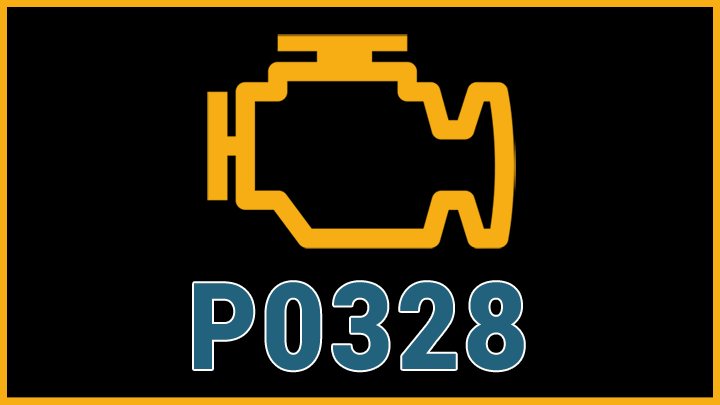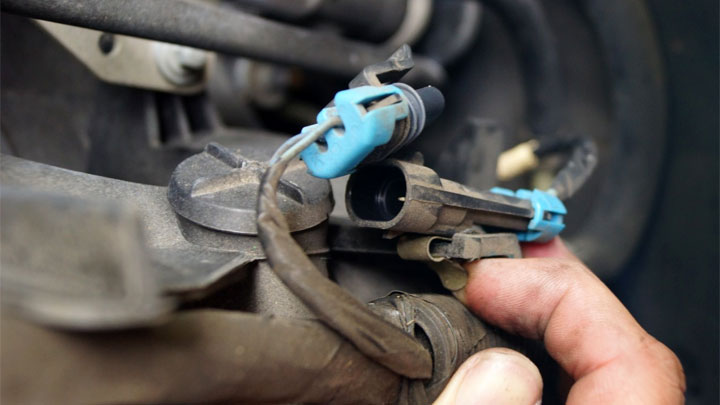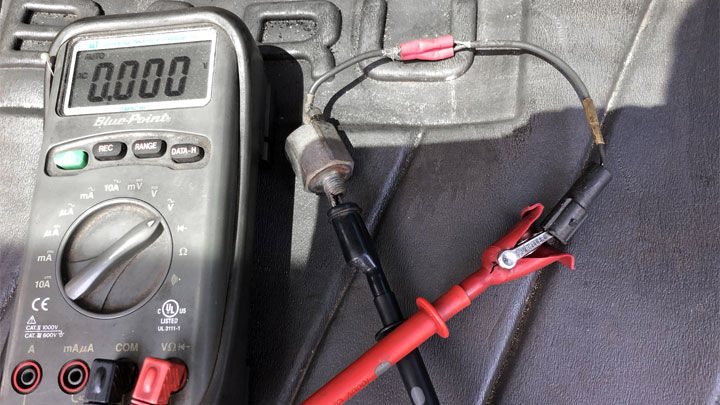P0328 Code (Symptoms, Causes, and How to Fix)
Has your vehicle recently been plagued with a pesky check engine light, caused by an active P0328 fault? If so, you probably have more than a few questions, regarding what this fault means and how to proceed.
Keep reading to learn what exactly a P0328 code means, likely causes, its seriousness, and most importantly, how to fix it.

What Does Code P0328 Mean?
Diagnostic fault code P0328 is indicative of a high input voltage condition, present within a vehicle’s knock sensor circuit. In the case of this specific DTC, the fault in question is in reference to the #1 bank knock sensor, if the affected vehicle features an engine of a “V” configuration.
This feedback indicates a general abnormality within the monitoring circuit of this sensor, leaving monitoring accuracy in question.
To better understand this principle, you must first understand the manner in which a knock sensor operates. Generally speaking, the knock sensor was engineered to detect pre-ignition “ping” or “knock”, thereby allowing spark timing to be retarded in response.
Sensors of this type also tend to pick up other acoustic anomalies as well, such as that associated with rod knock or piston slap.
In the case of DTC P0328, the affected vehicle’s ECU has determined that the input voltage from the bank #1 knock sensor has exceeded its anticipated operating threshold.
Most knock sensors operate on a 5-volt reference circuit, meaning that the out-of-spec voltage in question would have lingered to the high side of this spectrum for an extended period of time.
Diagnostic fault code P0328, in itself, does not point solely to a failed knock sensor, nor an actual pre-ignition event, though the possibility of each should not be overlooked.
In many cases, a short-to-power condition is actually responsible for a fault of this nature, placing increased importance upon carefully verifying the integrity of the affected circuit.
Related: Code P0325, Code P0326, Code P0327, Code P0332
Symptoms of Code P0328
Fault code P0382 is often accompanied by a host of secondary symptoms, a few of which can be quite noticeable. Recognizing these signs often proves key when attempting to expedite the diagnostic and repair process as a whole.
The following are several of the most common symptoms associated with DTC P0328.
- Illuminated check engine light
- Abnormal engine noises (knocking/pinging)
- Reduced engine performance
- Erratic idle
Causes of Code P0328

Diagnostic fault code P0328 can be caused by one of several different underlying causes, some of which tend to be easier to isolate than others. Understanding these potential causes can save both time and effort when attempting to come to a solid diagnosis.
The following are several of the most common causes of a P0328 code.
- Faulty knock sensor
- Damaged knock sensor circuit wiring
- Interference in the knock sensor signal
- Fuel of wrong octane rating
- Incorrect fuel pressures
- Internal engine damage
- PCM failure
Is Code P0328 Serious?
Diagnostic fault code P0328 is generally regarded as being rather serious in nature, due to some of the potential underlying issues that such a fault often signifies.
In a “best case” scenario, the affected vehicle’s knock sensor might simply have failed, or the electrical circuit to this sensor might be compromised. On the other hand, however, an actual knock might truly exist, indicating a far more serious condition altogether.
Even if the “knock” or “ping” that is being detected is strictly the product of pre-ignition, prolonged operation in this state can eventually lead to accelerated engine wear or engine damage.
This stems from the simple fact that pre-ignition indicates combustion that is not ideal or optimally efficient. This, in turn, places undue stress on a number of internal engine components.
In any event, the root cause of a vehicle’s P0328 fault code should be thoroughly diagnosed and repaired as soon as possible. Doing so can quite possibly prevent additional engine damage from being incurred. If you do not feel comfortable tackling such repairs yourself, an appointment should be made with a trusted automotive service center at the first available opportunity.
Regardless of the specifics, diagnosing and fixing the underlying issue causing the P0328 error code in your vehicle should be a top priority. Taking swift action can help prevent the possibility of harm to the engine.
If you don’t have the skills or tools to properly address this yourself, schedule an appointment with a reputable repair shop at your earliest convenience.
How to Fix Code P0328

You can pinpoint and fix the problem triggering the P0328 code in your car by following these troubleshooting steps. But before tackling any repairs yourself, always reference the factory service manual for the exact make and model.
#1 – Scan For Additional DTCs
Before beginning the diagnostic process, use a scan tool to check for the presence of any additional DTCs. Any such codes that are logged should be thoroughly diagnosed before proceeding.
#2 – Inspect Knock Sensor/Mounting
Begin by carefully inspecting your vehicle’s knock sensor for signs of damage. Likewise, the knock sensor itself should be verified for proper mounting, and mounting tightness before proceeding.
#3 – Check Condition of Wiring
Next, all wiring relating to the affected knock sensor should be carefully inspected for signs of damage. Along the same lines, the knock sensor’s connector should be checked for proper tightness and be verified to be free of corrosion.
#4 – Verify Engine Integrity
At this point, it will be necessary to verify that your vehicle’s engine has not suffered any type of internal mechanical failure. Check the engine’s coolant and oil levels, carefully checking for mixing of these 2 fluids.
Next, start the engine, revving it several times while listening carefully for abnormal noises. Any abnormal noises that are heard should be investigated thoroughly.
#5 – Check Freeze Frame Data
If no other issues are evident, analyze freeze frame data related to this fault. Check all knock sensor-related PIDs for obvious irregularities. Duplicate the conditions represented if possible.
#6 – Check Knock Sensor With Meter
While directly testing a knock sensor can be tricky, there are a few tests that can be done to verify the sensor’s general functionality.
A multimeter can be used to measure between the 2 wires tied to this sensor while checking continuity. A lack of continuity would indicate a faulty sensor.
Additionally, both of these wires can be back-probed, and checked individually with the positive lead of a multimeter, while anchoring to a reliable ground. Ideally, output from a sensor of this type should be between 0V and 4.9V.
- 5 Symptoms of an EVAP Leak (and Repair Cost) - Apr 27, 2024
- P0480 Code (Symptoms, Causes, and How to Fix) - Apr 19, 2024
- Car Temperature Gauge Stopped Working? (Here’s Why) - Apr 15, 2024
